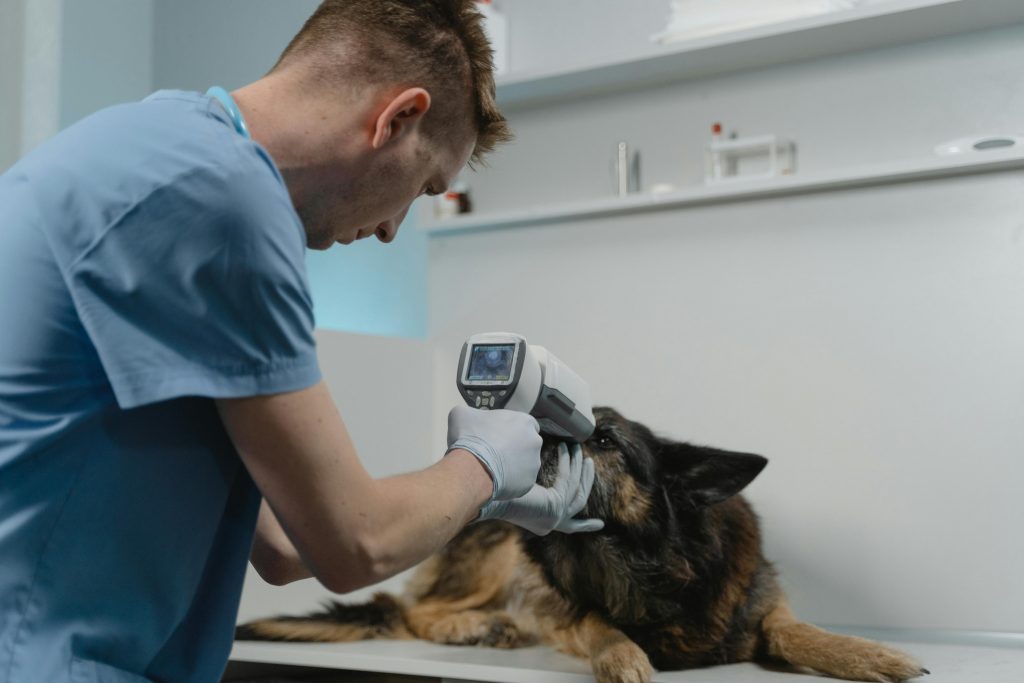
The veterinary industry has long been a mainstay of compassionate care, combining medical expertise with a deep understanding of animal behavior. However, as in many fields, veterinary practices across the globe are undergoing significant transformations, driven by the rapid advancement of technology.
Today, modern connectivity solutions, such as high-speed internet and cloud services, are helping evolve veterinary clinic operations, enhancing efficiency, improving client communication and satisfaction, and ultimately elevating the standard of care provided to our beloved pets.
The evolving technological landscape
The integration of high-speed internet and cloud services into veterinary practices marks a significant shift in how these facilities operate. This digital transformation is not merely a matter of convenience–it is a fundamental change in how veterinary care is delivered.
High-speed internet has become the backbone of modern veterinary clinics. Gone are the days of cumbersome paper records and limited communication means. In their place, digital patient records, telemedicine, and streamlined clinic operations have become the norm. Now, fast internet speeds facilitate the quick retrieval and updating of electronic health records (EHRs) for pets, improving accuracy and efficiency, particularly, for veterinary practices with numerous disparate locations.
Additionally, a reliable internet connection has become essential to supporting the rapid transfer and analysis of digital imaging and diagnostic tests.
Telemedicine and remote consultations have emerged as especially notable gamechangers for the veterinary industry. Telemedicine offers a convenient, efficient way to provide care. This is particularly true for routine consultations and follow-up appointments, as well as for pets that may be older, disabled, or too anxious to leave their homes. This internet-enabled offering not only maximizes a veterinary practice’s reach, but also caters to the evolving expectations of pet owners who seek convenience and immediacy in healthcare services.
Cloud services are a natural complement to a reliable internet connection. They offer scalable and accessible storage solutions for the vast amounts of data generated by veterinary practices, such as medical histories and diagnostic images, and make the data easily accessible. In turn, that accessibility helps enhance veterinarians’ abilities to collaborate with their colleagues, peers, and specialists no matter their location, sharing information and insights quickly and efficiently. This accessibility and efficiency are particularly crucial in emergency situations, where every second counts.
Enhancing clinic efficiency and client experience
Adopting these types of technologies has a direct impact on overall clinic efficiency. EHRs, for instance, streamline the entire process of patient care–from initial consultation to treatment and follow-up. This digital approach reduces paperwork, minimizes errors, and saves time, allowing veterinarians to focus more on delivering quality, personalized patient care rather than administrative tasks.
In the digital age, client communication and experience have taken centerstage. Pet owners today consider their pets closer to children, and therefore expect a level of engagement and transparency that was impossible a few years ago.
Online portals, apps, and communication tools, all supported by robust connectivity solutions, empower pet owners with real-time access to their pets’ health information, appointment scheduling, and direct communication channels with veterinary professionals. This level of connectivity and digital interaction enhances the client experience, building trust and loyalty. It also enables veterinarians to provide personalized care, as they have more context and history about the patient readily available.
Broader implications
The adoption of advanced connectivity solutions in veterinary practices will continue to have broader implications for the industry at large. It paves the way for more collaborative and compassionate pet care, where pet owners have more access to their veterinarians and, in turn, veterinary specialists have better access to the operational tools needed for success. This ultimately serves to enhance the quality of treatment provided, and the satisfaction of customers.
The integration of technology in veterinary practices also heralds a new era of data-driven animal healthcare. By harnessing the wealth of digital data generated through clinical care–including medical histories and pets’ lifestyle factors–veterinarians can develop more informed and effective treatment protocols and preventive care strategies. By collecting comprehensive patient data and analyzing it to uncover patterns and insights, veterinary practices can not only enhance individual patient care through personalized treatment plans but also aid in predicting and preventing diseases before they manifest.
Additionally, the aggregation of this data on an industry-wide scale can fuel advancements in veterinary research, leading to more effective treatments and vaccines. Ultimately, this data-driven methodology promises to significantly improve animal health outcomes, making veterinary care more proactive and tailored to individual needs.
Further, these technologies can help veterinary practices to operate more sustainably. Digital records reduce the need for paper, and remote consultations can cut down on the carbon footprint associated with travel to and from clinic locations. In an era where environmental consciousness is increasingly important, these considerations are not just good for business; they align with the values of many pet owners.
As we look to the future, it is clear technology will continue to play a crucial role in the evolution of veterinary care. By embracing modern connectivity solutions, veterinary practices can enhance their efficiency, improve client communication, and, most importantly, provide higher-quality care to our beloved pets. The veterinary industry’s willingness to adapt and innovate is not just a response to the challenges of the digital age–it also represents a commitment to the ongoing health and well-being of the animals we cherish.
Rob Brenner is the vice president for Comcast Business in the Pacific Northwest region. Brenner is responsible for managing the company’s operations and the statewide expansion of its business technology and services.
